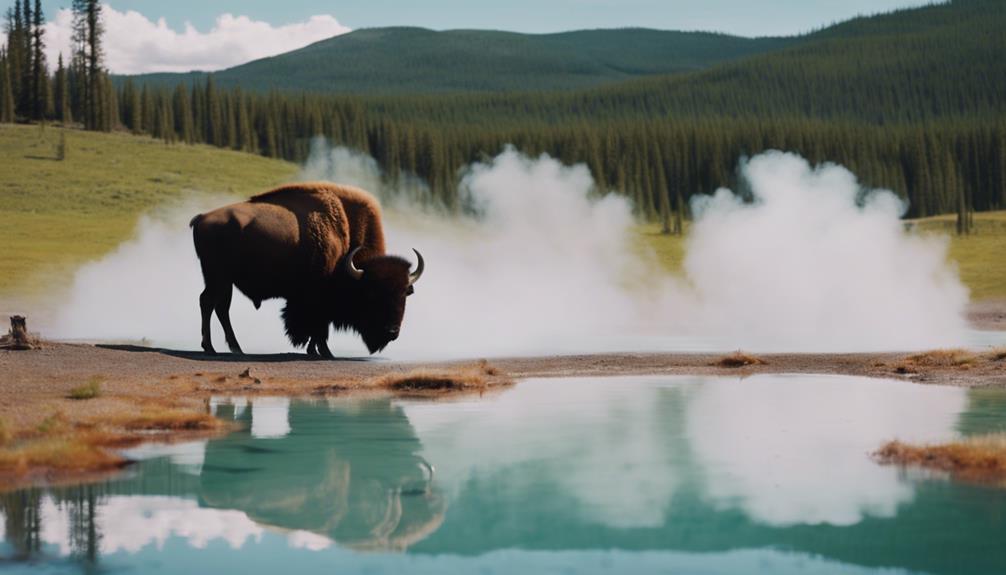Did you know that soap has a fascinating history and surprising ingredients?
Discover the origins of soap, learn about different soap-making techniques throughout history, and explore the science behind this everyday essential.
Not only does soap play a crucial role in hygiene and health, but it also has made its way into pop culture.
Get ready to dive into some fun facts about soap that will make you appreciate this humble household item even more.
Key Takeaways
- Soap originated in ancient Babylon around 2800 BC and held cultural significance in ancient civilizations.
- Soap-making techniques have evolved over time, reflecting different cultures and traditions.
- Soap molecules have a unique structure that allows them to lift away dirt and oil from the skin.
- Soap prevents the spread of infections and illnesses by removing dirt and germs.
The Origins of Soap
Soap was first believed to have originated in ancient Babylon around 2800 BC. Ancient recipes for soap were discovered on clay tablets dating back to this time, providing evidence of its early existence.
Soap held great cultural significance in ancient civilizations, as it was not only used for personal hygiene but also played a role in religious rituals and ceremonies. It was considered a symbol of purity and cleanliness, both physically and spiritually.
The production and use of soap spread throughout different cultures, with each civilization adding their unique touch to the recipe. This early development of soap demonstrates the universal desire for cleanliness and wellbeing that has transcended time and continues to be valued today.
Soap-Making Techniques Through History
Throughout history, people have been perfecting their techniques for making soap. The art of soap-making has evolved over time, with different cultures and traditions adding their own unique touch to the process. Here are four interesting things you may not know about soap-making:
-
Soap Making Tools: From ancient times to the present day, various tools have been used in soap-making. These include wooden molds for shaping the soap bars, lye mixers for combining fats and oils with alkali, and stirring sticks or spoons for mixing the ingredients.
-
Traditional Soap Recipes: Different regions have their own traditional recipes for making soap. For example, in Marseille, France, the famous Marseilles soap is made using a mixture of olive oil and soda ash. In Aleppo, Syria, traditional Aleppian soap is crafted from olive oil and laurel oil.
-
Saponification Process: The saponification process is key to creating soap. It involves combining fats or oils with an alkali (such as sodium hydroxide or potassium hydroxide) to produce a chemical reaction that forms soap molecules.
-
Cultural Significance: Soap-making has cultural significance in many societies around the world. It represents cleanliness and purification rituals in various religious ceremonies and plays an important role in personal hygiene practices.
Surprising Ingredients Used in Soap
Did you know that some surprising ingredients can be used in soap-making? Goat’s milk and coffee grounds, for example, are commonly used additives. Adding unusual ingredients to soap has a long history, dating back to ancient civilizations. In ancient Egypt, they would use olive oil as the base and add aromatic herbs like lavender or chamomile for a pleasant scent. The Romans had their own unique recipes, using animal fat mixed with ashes. Nowadays, soap makers are getting creative with their ingredients. Goat’s milk is known for its moisturizing properties and is often added to nourish the skin. Coffee grounds are another popular additive because they act as an exfoliant and help remove dead skin cells. So next time you’re in need of some pampering, why not try a soap with one of these surprising ingredients?
The Science Behind Soap
Did you know that soap is not just a simple cleaning agent? It actually has fascinating scientific properties that make it effective in removing dirt and grime.
Understanding the science behind soap can help you appreciate its cleansing power even more. In this discussion, we will explore the key points of soap’s cleansing properties, its chemical composition, and how it interacts with water to get your hands squeaky clean.
Soap’s Cleansing Properties
When you use soap, it removes dirt and bacteria from your skin due to its cleansing properties. Soap has been used for centuries to keep our bodies clean and healthy.
Here are four interesting facts about soap’s cleansing abilities:
-
Soap molecules have a unique structure that allows them to surround and lift away dirt and oil from your skin.
-
Soap creates a lather when mixed with water, which helps to spread the cleansing agents evenly across your skin.
-
Different types of soap contain various ingredients that offer additional benefits for your skin, such as moisturizing or exfoliating properties.
-
Using soap regularly can help maintain the natural balance of oils on your skin, keeping it hydrated without feeling greasy.
Chemical Composition of Soap
The chemical composition of soap allows it to effectively remove dirt and bacteria from your skin. Soap is made through a process called saponification, which involves a chemical reaction between fats or oils and an alkali, such as sodium hydroxide. This reaction breaks down the fats into glycerol and fatty acid salts, known as soap molecules.
These soap molecules have both hydrophobic (water-repelling) and hydrophilic (water-attracting) properties. When you wash your hands with soap, the hydrophobic tails of the soap molecules attach to dirt and oil on your skin, while the hydrophilic heads surround them in a bubble-like structure called a micelle.
As you rinse off the soap, these micelles carry away the trapped dirt and bacteria, leaving your skin clean and fresh. So next time you use soap, remember that its chemical reactions during the manufacturing process make it an effective cleanser for your skin.
Soap’s Interaction With Water
Soap’s interaction with water is crucial in its ability to effectively remove dirt and bacteria from your skin. Here are four fascinating facts about soap’s role in keeping your skin clean:
-
Emulsification: Soap contains molecules that have a hydrophilic (water-loving) head and a hydrophobic (water-repelling) tail. When you lather soap with water, these molecules surround dirt and oil particles, lifting them away from your skin.
-
Breaking the surface tension: Water has high surface tension, making it difficult to penetrate and remove dirt. Soap reduces surface tension by breaking the cohesive forces between water molecules, allowing it to spread more evenly across your skin.
-
Disinfection: In addition to removing visible dirt, soap also helps kill bacteria and viruses on your skin’s surface. The surfactants present in soap disrupt the cell membranes of these microorganisms, rendering them inactive.
-
Gentle cleansing: Unlike harsh chemical cleansers, soap is generally mild and gentle on your skin due to its natural ingredients. It helps maintain the moisture balance of your skin while effectively removing impurities.
With its unique properties, soap plays a vital role in preserving the health and cleanliness of our skin by effectively removing dirt and bacteria while being gentle at the same time.
Soap’s Impact on Hygiene and Health
Soap has had a significant impact on hygiene and health. Its role in preventing disease cannot be overstated. By effectively removing dirt, germs, and other impurities from your hands and body, soap helps to prevent the spread of infections and illnesses. It creates a clean environment that promotes good health practices. However, it is also important to consider soap’s impact on the environment. The production and disposal of soap can contribute to water pollution and waste accumulation. To minimize this impact, choose soaps that are biodegradable and made from natural ingredients. By making conscious choices about the soap you use, you can maintain personal hygiene while also showing care for the environment.
| Positive Aspects | Negative Aspects | Emotional Response |
|---|---|---|
| Prevents diseases | Contributes to pollution | Concerned |
| Promotes cleanliness | Produces waste | Responsible |
| Good for personal hygiene | Environmental impact | Conscious |
Remember: You have the power to make a difference by choosing eco-friendly soap options that prioritize both your health and the well-being of our planet.
Fun Facts About Soap in Pop Culture
Did you know that soap has made appearances in various forms of pop culture? From movies to TV shows, soap has become an iconic item that is often referenced and used as a symbol in storytelling. Here are four interesting pop culture references involving soap:
-
Fight Club: In this cult classic film, soap plays a significant role as the main character creates homemade soap using fat from liposuction clinics.
-
The Simpsons: The popular animated series features a fictional brand of soap called ‘Mr. Sparkle,’ which becomes a running joke throughout the show.
-
Pulp Fiction: In one memorable scene, two hitmen discuss the importance of cleanliness before carrying out their tasks, highlighting the significance of hygiene and its connection to soap.
-
Friends: In an episode titled ‘The One with All the Resolutions,’ Joey develops an obsession with washing his hands after discovering the joy of liquid hand soaps.
These examples demonstrate how soap has become deeply ingrained in our entertainment and cultural references.
Frequently Asked Questions
How Long Have People Been Using Soap?
You’ve probably wondered how long people have been using soap. Well, the history of soap making goes way back to ancient times. They had their own methods of production, which is pretty fascinating!
Can Soap Be Made From Any Kind of Fat or Oil?
Yes, soap can be made from any kind of fat or oil. The soap making process involves combining fats or oils with lye. Different types of fats and oils result in different properties and benefits for your skin.
What Are Some Unusual Ingredients That Have Been Used in Soap Throughout History?
Throughout history, people have used unusual ingredients in soap. Animal fat, ashes, and vegetable oils have all been utilized. These ingredients can provide unique properties and scents to enhance the soap-making process.
How Does Soap Actually Work to Clean Our Hands and Bodies?
Soap works by using its chemical properties to break down and remove dirt and oils from your skin. The science behind soap’s cleansing power involves its ability to mix with both water and oil. There are different types of soap available in the market, each with their own unique ingredients and benefits.
Are There Any Famous Movies or TV Shows That Feature Soap Prominently in Their Storylines?
In famous soap operas and movies, soap often symbolizes purity and cleansing. It can represent the characters’ desire for a fresh start or the hidden secrets they’re trying to wash away.
Conclusion
So there you have it, some fun facts about soap! From its ancient origins to the surprising ingredients used in its making, soap has a fascinating history.
Understanding the science behind soap helps us appreciate its effectiveness in maintaining hygiene and health.
And let’s not forget its impact on pop culture – from iconic movie scenes to catchy jingles, soap has truly made a mark.
Next time you use soap, remember these interesting tidbits and appreciate the little bar that plays such a big role in our lives.





